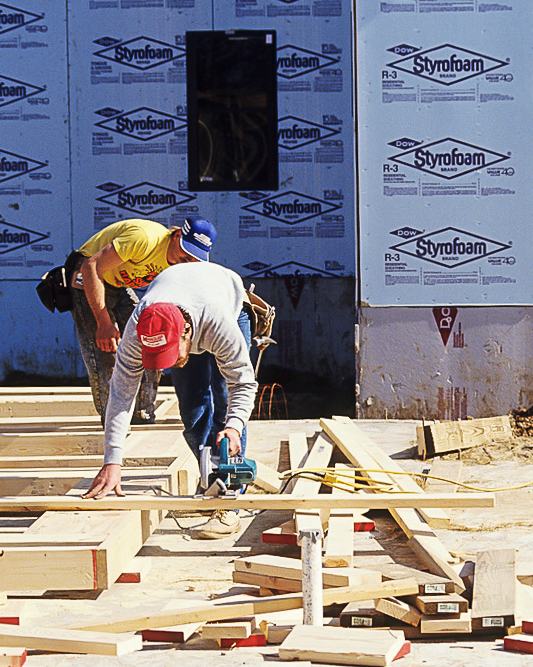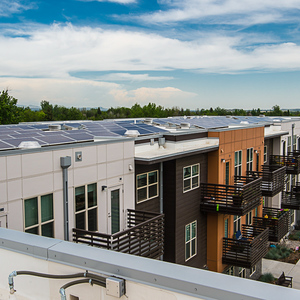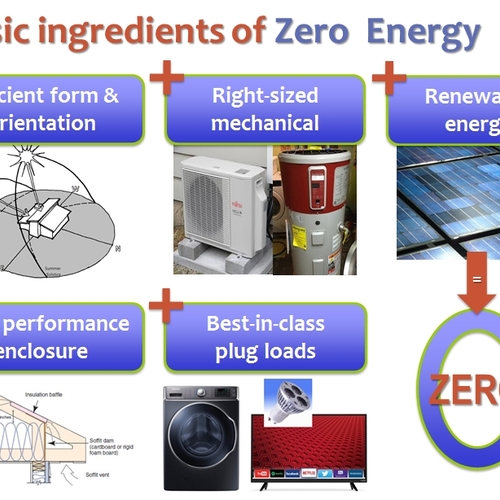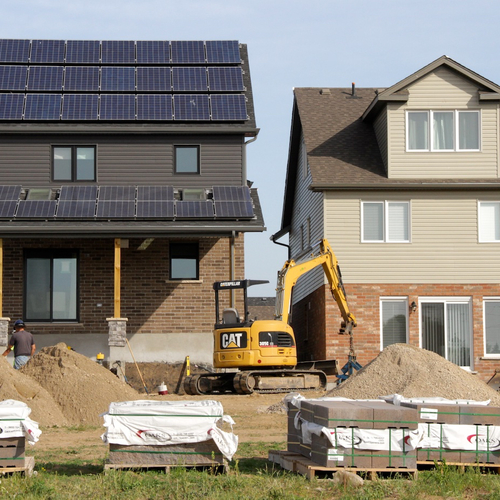
Image Credit: Wisconsin Department of Natural Resources via Flickr
Tougher efficiency requirements could add tens of thousands of dollars to the cost of building a new house in Canada, business and government officials said.
Philip Rizcallah, director of research and development at the National Research Council of Canada, told a government panel last month that changes to the national building code now under development could inflate the cost of a typical home by as much as $35,000, according to an article published by the Financial Post. The Canadian Home Builders’ Association (CHBA) warned that stricter building requirements could add as much as $50,000 to the cost of a new home.
Natural Resources Canada, a government agency, is working on more stringent building requirements as part of an effort to lower greenhouse gas emissions. A federal carbon tax, new regulations on methane, and incentives for zero-emission vehicles also are on the table.
Buildings are a major culprit for greenhouse gas emissions in Canada, accounting for 17% of the country’s total, according to government estimates, and making the country’s per capita energy consumption among the highest in the world.
Changes would put focus on efficiency
The case for tougher building codes was roughed out in the Pan-Canadian Framework late last year, The Post said. The document lays out a number of approaches for lowering greenhouse gas emissions: making new houses more energy efficient, retrofitting existing buildings, improving the efficiency of appliances and equipment, and supporting building codes and energy-efficient housing in indigenous communities.
“Advances in clean technologies and building practices can make new buildings ‘net-zero energy,’ meaning they require so little energy they could potentially rely on their own renewable energy supplies for all of their energy needs,” the plan says. “Through research and development, technology costs continue to fall, and government and industry efforts and investments will accelerate that trend. These advances, supported by a model ‘net-zero energy ready’ building code, will enable all builders to adopt these practices and lower lifecycle costs for homeowners.”
Officials said that more stringent model building codes should be adopted by 2020, with “net zero energy ready” codes in place by 2030. Codes for retrofitting existing buildings should be in place by 2022.
In arguing for net-zero energy buildings, officials said that construction costs for that level of performance have dropped 40% in the last decade and continue to fall. “The benefits of net-zero energy buildings are significant,” it said. “Estimated operating costs for a net-zero energy ready house is 30% to 55% less than a typical house, depending on region, fuel type and occupant behaviour.”
More specifics to come
The Framework also makes generation recommendations for other parts of the Canadian economy, such as transportation and industry. But it doesn’t list specific requirements for new or retrofitted buildings — minimum requirements for insulation or airtightness, for example. Those details are still to come.
David Foster, the senior director of communications for the Canadian Home Builders’ Association (CHBA), said by telephone that the specifics of an updated national building code are years down the road. He said a new national code is set every five years — with the next due out in 2020 — and that it’s up to provincial governments to adopt it. So the overall goal of developing net-zero standards by 2030 is still 12 years away from adoption, giving trade and government groups plenty of time to find ways of reducing costs.
Keeping energy efficiency standards affordable is a key issue, Foster said. Building a net-zero energy ready house today is about $20 per square foot more than building a house to current code requirements, mainly because of more expensive windows and HVAC equipment, he said. With that incremental cost in mind, a 2,000-square-foot net-zero ready house would cost $40,000 more to build today than a house that barely meets current code requirements. That’s roughly what CHBA’s CEO Kevin Lee told the Financial Post.
“You’re talking about $30,000, $40,000, $50,000 on top of the price of an existing home to meet the targets that they’re setting out,” Lee said. “Our concern is always what this will mean for affordability.”
Weekly Newsletter
Get building science and energy efficiency advice, plus special offers, in your inbox.















4 Comments
Cost?
The notion that a net zero energy ready 2000 square foot house will cost an extra $40,000 over a code minimum house is foolish. "Mainly because of more expensive windows and hvac equipment?"
In fact, such a house will need less expensive hvac equipment, given the substantially reduced heating and cooling loads. And while better windows cost more, the incremental cost isn't all that high. We paid about $28,000 for highly efficient windows and doors, which may have represented at most several thousand dollars more than typical.And we have a lot of Windows and doors.
Builder's associations, like CHBA, have a vested interest in the status quo.
An overstatement perhaps, but foolish? @ stephen sheehy
The statement that i "....could inflate the cost of a typical home by as much as $35,000" is not the same as "...WILL inflate the cost of a typical home by as much as $35,000..."
The higher end estimates are purely about anxiety around how to the higher spec, and those numbers might even be true in some cases initially, but that would change quickly.
Think about production home builders, not custom builds. When higher efficiency HVAC is more cost effective than higher performance windows they'll take the HVAC and conversely, and that is more readily sorted out in one-off construction. For tract homes they'll tend to pick one window type and one HVAC system and use it over the entire project almost independently of the range of house designs/sizes, saving valuable time, and taking back some of the additional cost in lower pricing for higher purchase volumes.
But if initially the upcharges for Net Zero Ready might be that high in some cases, it should fall pretty quickly as builders cost optimize, and the manufacturing volumes for better windows & HVAC rise and prices fall at the inherent learning curves of manufactured goods.
I suspect production builders will continue to oversize the HVAC unless the code specifies a maximum oversize factor, since the marginal cost per BTU/hr of additional capacity is usually pretty cheap- with right-sizing saving less than the volume discounts of buying 100 of the same unit rather than 3-5 different sizes for a development, but the average efficiency might tick up a notch.
optimizing the wrong thing
Like so many other reports, this one flips between "greenhouse gas emissions" and "net zero energy". But the latter is an inaccurate, market distorting proxy for reduction of the former.
Seems right...
$40k seems about right, to me. An 8 kW solar array is $24k by itself. Add in high efficiency Windows tighter envelope, heat pump, and extra insulation, and it's not hard to hit $40k.
Keep in mind, these prices are in CDN, and it's colder up here. This makes getting to net Zero more expensive.
Log in or create an account to post a comment.
Sign up Log in